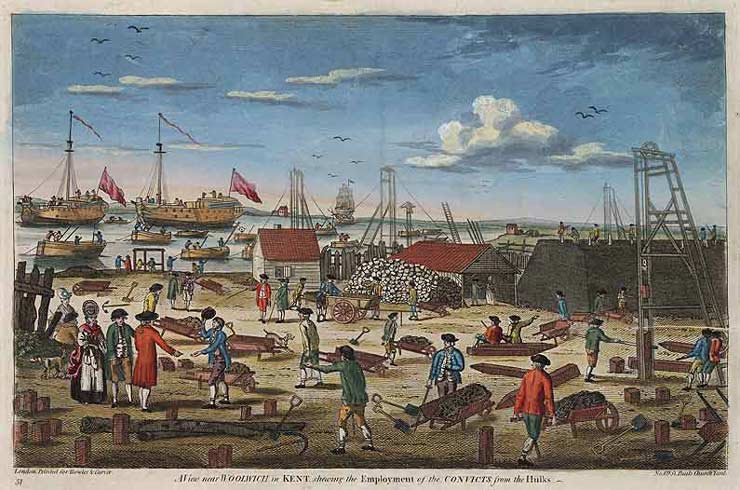 Convicts from hulks, Woolwich, England, 1779
Convicts from hulks, Woolwich, England, 1779
TLF ID R3010
This is a hand-coloured engraving of convicts from the hulks at Woolwich labouring in the docks area. Two hulks are anchored offshore with rowboats shuttling to and fro. Beneath the image is inscribed 'A View near WOOLWICH in KENT showing the Employment of the CONVICTS from the Hulks'. The engraving measures 29.8 cm x 44.9 cm.
